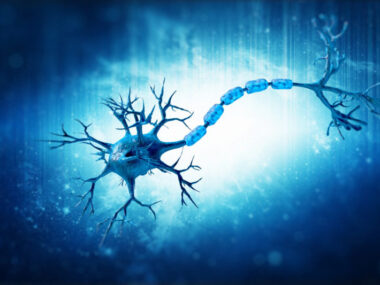2 FGD4 Mutations Newly Identified in CMT4H Patient in China
Written by |

New mutations in the FGD4 gene associated with Charcot-Marie-Tooth disease type 4H (CMT4H) have been identified in a 12-year-old boy in China.
The study, “Novel FGD4 Variants and Literature Review of Charcot-Marie-Tooth Disease Type 4H,” was published in Annals of Clinical Case Reports.
Charcot-Marie-Tooth (CMT) is a heritable disease that affects the nerves responsible for controlling limb movement and sensation. CMT has several types and subtypes, each of which are caused by different genetic mutations and result in a range of clinical presentation.
CMT4H, a rare subtype, is caused by mutations in FGD4, the gene responsible for making the frabin protein.
Frabin is involved in regulating the function of Schwann cells. These cells are necessary for nerve development and the maintenance of myelin, the fatty substance that surrounds and protects nerve cells and helps to speed nerve impulses.
Since the initial discovery of FGD4 mutations in CMT4H, 40 cases across 24 families have been identified worldwide.
A team of Chinese researchers identified new FGD4 variants in a 12-year-old boy with CMT4H.
The boy came to their clinic with complaints of progressive gait problems, including walking on his toes, running slowly, and occasional falls. None of his family members had similar issues.
Upon evaluation, the researchers found that the boy had cavovarus foot or pes cavus, a skeletal deformity causing a high foot arch and foot dragging.
Motor conduction studies, which measure the speed of electrical signals along nerve fibers, showed that electrical impulses were significantly slow, a common occurrence in diseases like CMT4 that affect myelin.
A biopsy of the sural nerve, located in the calf, revealed the boy had fewer myelinated fibers than normal. In some spots, myelin was thickened and excessively folded.
These clinical findings were consistent with typical CMT4H presentation, the researchers noted.
Whole-exome sequencing, a technique used to find genetic mutations, found the boy had inherited two FGD4 mutations, one from his mother and one from his father, confirming a CMT4H diagnosis.
The mutations, c.1688C>A and c.1951C>T, had never before been reported in CMT4 patients or healthy people. The researchers determined that both mutations are probably pathogenic, or disease-causing.
CMT4 is inherited in an autosomal recessive manner, meaning a person must inherit a disease-causing mutation from both parents in order to have symptoms. Since each parent had only one mutated copy of FGD4, both were healthy compared with their son.
To date, several different mutations have been identified in FGD4, but different types of mutations, located in different parts of the gene, don’t seem to correlate with specific disease features, according to the researchers.
“There is no notable trend between the disease progression, phenotypic severity and the mutations of different types or in different domains,” the researchers wrote.
Frabin, the protein affected by FGD4 mutations, is involved in several nerve cell signaling pathways that could contribute to CMT4H disease presentation, they noted.
The team suggested that missing or dysfunctional frabin causes impairments in downstream signaling pathways that ultimately affect Schwann cell function.
“Overall, it is strongly suggested that CMT4H is a disease of various impaired signaling pathways,” the researchers wrote. “Further detailed [evaluation of the] molecular mechanism [that] underlies the signaling is warranted.”
These pathways, including those involving the Rho GTPase and Cdc42 proteins, could be targets of potential new therapies.
“Rho GTPases and the frabin-Cdc42 axis are promising candidates for molecules that are involved in several aspects of Schwann cell biology, including those associated with myelin development,” the researchers wrote.
Currently, there are no effective therapies for CMT4H that address its underlying cause.
“We are still far from a comprehensive picture of the information concerning frabin function and the following molecular signaling,” the researchers wrote.
“Identification of the underlying mechanisms of Schwann cell damage in inherited neuropathies may hold promise for the development of therapies not only for these rare entities but also for a broad spectrum of more acquired demyelinating disorders of the peripheral and central nervous system,” they concluded.






